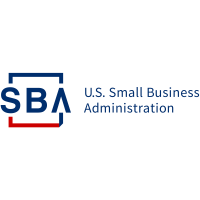Deadline Approaching in Texas for SBA Working Capital Loans Due to Drought
Deadline Approaching in Texas for SBA Working Capital Loans Due
“As communities across the Southeast continue to recover and rebuild after Hurricanes Helene and Milton, the SBA remains focused on its mission to provide support to small businesses to help stabilize local economies, even in the face of diminished disaster funding,” said Administrator Isabel Casillas Guzman. “If your business has sustained physical damage, or you’ve lost inventory, equipment or revenues, the SBA will help you navigate the resources available and work with you at our recovery centers or with our customer service specialists, in person and online, so you can fully submit your disaster loan application and be ready to receive financial relief as soon as funds are replenished.”
SACRAMENTO, Calif. – Francisco Sánchez Jr., associate administrator for the Office of Disaster Recovery and Resilience at the Small Business Administration, today reminded small nonfarm businesses in 165 Texas counties, neighboring parishes in Louisiana and neighboring counties in New Mexico and Oklahoma of the Nov. 25, 2024, deadline to apply for an SBA federal disaster loan for economic injury. These low-interest loans are to offset economic losses because of reduced revenues caused by drought in the following primary counties that began Nov. 1, 2023.
Primary Texas counties: Andrews, Angelina, Aransas, Atascosa, Austin, Bandera, Bastrop, Bee, Bell, Bexar, Blanco, Brewster, Burnet, Caldwell, Calhoun, Carson, Chambers, Childress, Clay, Colorado, Comal, Cooke, Coryell, Culberson, DeWitt, Deaf Smith, Denton, Ector, El Paso, Fayette, Fort Bend, Frio, Galveston, Gillespie, Goliad, Gonzales, Guadalupe, Hardeman, Hardin, Harris, Hays, Hudspeth, Jackson, Jasper, Jeff Davis, Jefferson, Karnes, Kendall, Kerr, Kimble, Lampasas, Lavaca, Lee, Liberty, Live Oak, Llano, Loving, Mason, Matagorda, Medina, Midland, Milam, Montague, Newton, Oldham, Orange, Panola, Parker, Parmer, Polk, Potter, Presidio, Randall, Real, Reeves, Refugio, Sabine, San Augustine, San Saba, Shelby, Tarrant, Travis, Tyler, Uvalde, Victoria, Washington, Wharton, Williamson, Wilson, Winkler and Wise;
Neighboring Texas counties: Archer, Armstrong, Bailey, Bosque, Brazoria, Brazos, Brown, Burleson, Castro, Cherokee, Collin, Collingsworth, Cottle, Crane, Dallas, Dawson, Dimmit, Donley, Duval, Edwards, Ellis, Erath, Falls, Foard, Gaines, Glasscock, Gray, Grayson, Grimes, Hall, Hamilton, Harrison, Hartley, Hood, Houston, Howard, Hutchinson, Jack, Jim Wells, Johnson, Kinney, La Salle, Lamb, Martin, Maverick, McCulloch, McLennan, McMullen, Menard, Mills, Montgomery, Moore, Nacogdoches, Nueces, Palo Pinto, Pecos, Reagan, Roberts, Robertson, Rusk, San Jacinto, San Patricio, Schleicher, Sutton, Swisher, Terrell, Trinity, Upton, Waller, Ward, Wichita, Wilbarger, Young and Zavala;
Neighboring Louisiana parishes: Beauregard, Caddo, Calcasieu, Cameron, DeSoto, Sabine and Vernon;
Neighboring New Mexico counties: Curry, Doña Ana, Eddy, Lea, Otero, Quay and Roosevelt;
Neighboring Oklahoma counties: Cotton, Harmon, Jackson, Jefferson, Love and Marshall.
When farmers face crop losses and a disaster is declared by the Secretary of Agriculture, SBA working capital loans become a lifeline for eligible small businesses. “These loans are the backbone that helps rural communities bounce back and thrive after a disaster strikes,” Sánchez said.
According to Sánchez, small nonfarm businesses, small agricultural cooperatives, small businesses engaged in aquaculture and most private nonprofit organizations of any size may apply for Economic Injury Disaster Loans of up to $2 million to help meet working capital needs caused by the disaster. “Economic Injury Disaster Loans may be used to pay fixed debts, payroll, accounts payable and other bills that cannot be paid because of the disaster’s impact,” Sánchez continued.
“SBA eligibility covers both the economic impacts on businesses dependent on farmers and ranchers that have suffered agricultural production losses caused by the disaster and businesses directly impacted by the disaster. Economic injury assistance is available regardless of whether the applicant suffered any property damage,” Sánchez added.
The interest rate is 4 percent for businesses and 3.25 percent for private nonprofit organizations with terms up to 30 years. Loan amounts and terms are set by SBA and are based on each applicant’s financial condition.
Interest does not begin to accrue until 12 months from the date of the initial disaster loan disbursement. SBA disaster loan repayment begins 12 months from the date of the first disbursement.
On October 15, 2024, it was announced that funds for the Disaster Loan Program have been fully expended. While no new loans can be issued until Congress appropriates additional funding, we remain committed to supporting disaster survivors. Applications will continue to be accepted and processed to ensure individuals and businesses are prepared to receive assistance once funding becomes available.
Applicants are encouraged to submit their loan applications promptly for review in anticipation of future funding.
By law, SBA makes Economic Injury Disaster Loans available when the U.S. Secretary of Agriculture designates an agricultural disaster. The Secretary declared this disaster on March 25.
Businesses primarily engaged in farming or ranching are not eligible for SBA disaster assistance. Agricultural enterprises should contact the Farm Services Agency about the U.S. Department of Agriculture assistance made available by the Secretary’s declaration. However, nurseries are eligible for SBA disaster assistance in drought disasters.
Applicants may apply online and receive additional disaster assistance information at SBA.gov/disaster. Applicants may also call SBA’s Customer Service Center at (800) 659-2955 or email disastercustomerservice@sba.

